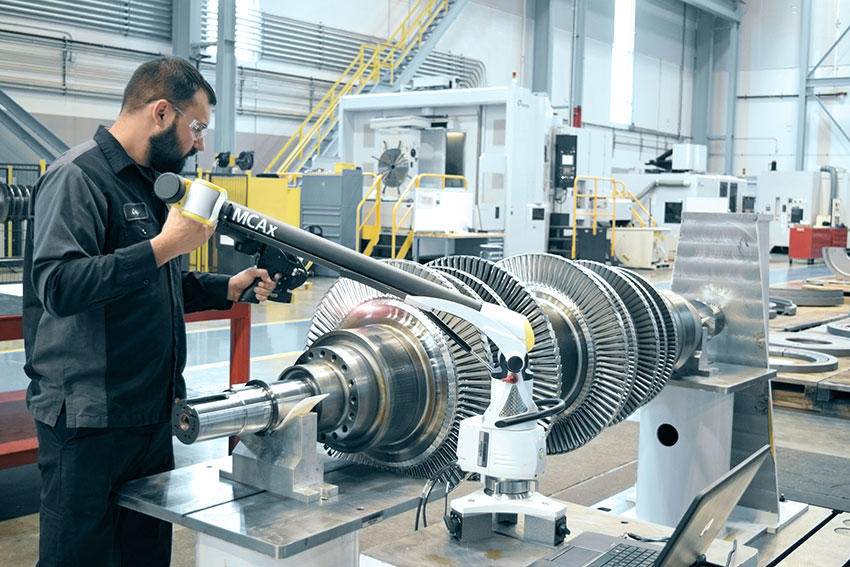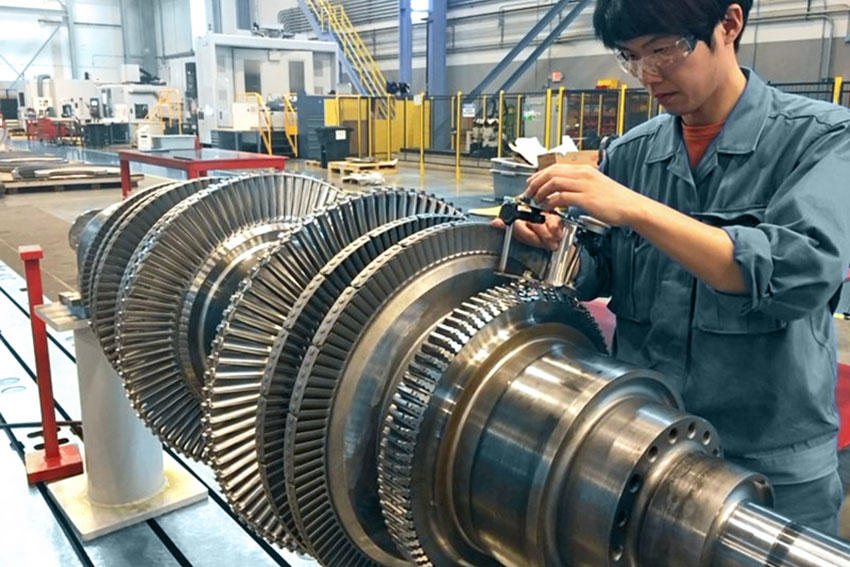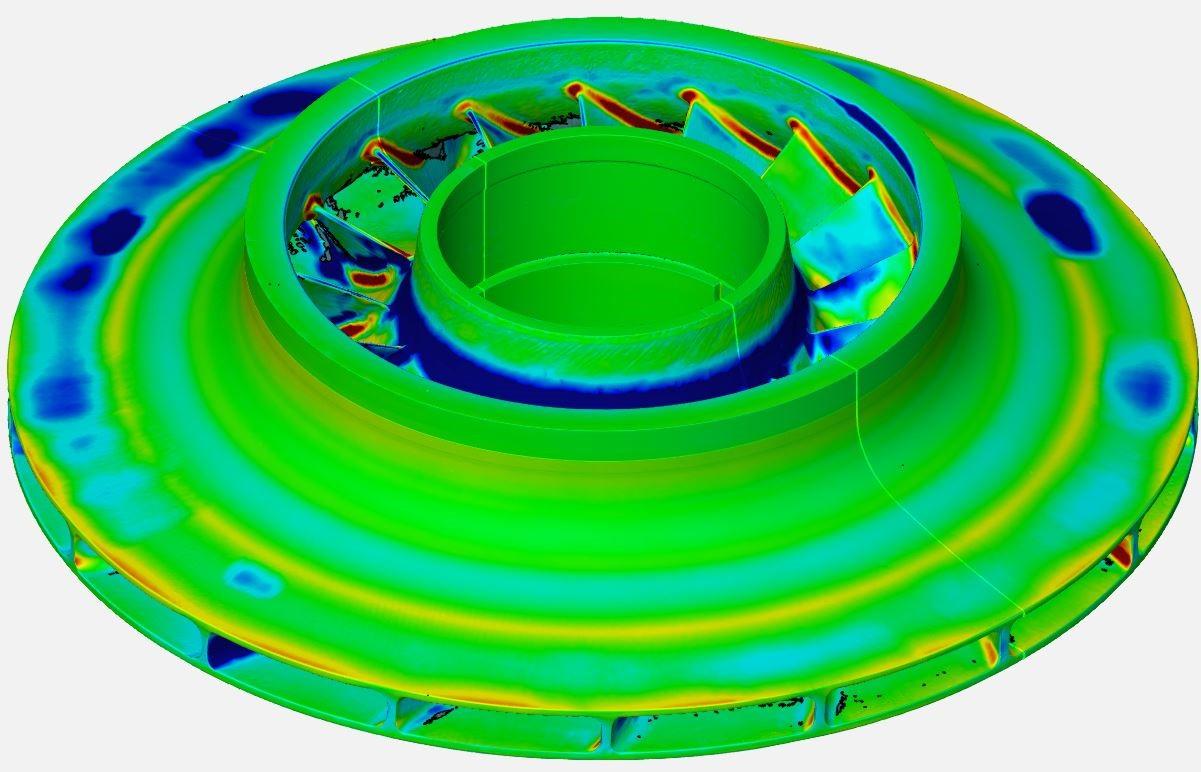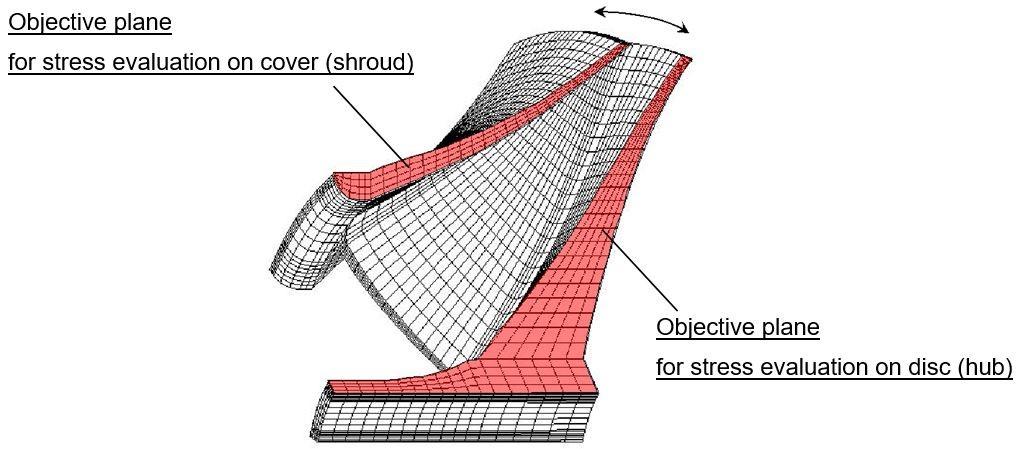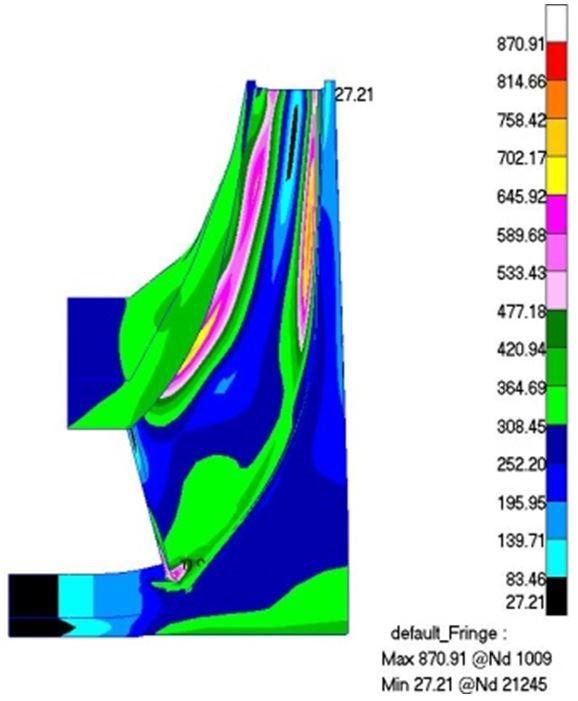INSIGHTS
THE MHI COMPRESSOR INTERNATIONAL APPROACH TO REVERSE ENGINEERING NON-OEM EQUIPMENTHydrocarbon processing plants across the U.S. face aging turbomachinery assets operators are tasked with resolving rotor problems as they inevitably arise. In addition to production costs, the expense of resourcing an outside field service provider to replace antiquated parts each time they fail can reach tens of millions of dollars over the rotor’s operational lifetime. In such cases, upgrades can be a cost-effective alternative to replacements, which doesn’t always have to come from the OEM. MHI Compressor’s advanced engineering solutions and robust Gulf Coast repair facility convince plant managers to send other OEMs’ machinery our way when experiencing persistent issues. During one recent project, MHI Compressor was invited by a major downstream customer to bid on manufacturing a replicated, but upgraded, rotor to resolve a recurring failure. With limited support from the rotor’s original equipment manufacturer (OEM), the customer was forced to keep replacing the damaged rotor with its spare at every four or five year turnaround and purchase replacement parts as required. Ultimately, the customer elected to source an upgraded rotor through a different supplier. After studying the rotor’s assembly type, impeller method of construction, and metallurgy, we developed a new, improved rotor in accordance with modern design and manufacturing standards. A detailed technical report on the design was discussed with the customer, who chose to proceed with the MHI upgraded rotor design.
ROBUST, DETAILED ENGINEERINGAt MHI Compressor, we pride ourselves on the thoroughness of our engineering team, their attention to detail, and the innovative solutions provided. For this project, MHI’s approach was to offer not only a replicated rotor to match the performance of the original rotor, but to far exceed it in regards to corrosion resistance and reliability. Since the original rotor was manufactured in the 1970s, technologies, manufacturing processes and standards have improved substantially. After the rotor was delivered to our facility, each of the components were carefully inspected and 3D models were generated. The latest MHI design and manufacturing concepts were then applied to manufacture the improved rotor. During the investigation, materials stress corrosion cracking (SCC) was identified, which is a common problem in hydrocarbon processes and occurs when a material susceptible to SCC combines with a high level of stress and a corrosive environment. Fortunately, if just one of these elements is changed, SCC will cease to be a problem. It was found that the base metal of the impellers as originally designed was susceptible to SCC due to the fact that the compressor was originally designed to be in a non-corrosive environment: air. As a result of this finding, MHI Compressor recommended a material that had superior corrosion resistance and strength compared to the original base material. In this case, the rotor was manufactured decades ago in a time where very precise equipment was unavailable. As a result, it was found that there was a slightly uneven distribution of impeller blades relative to each other. Today, improved position accuracy and control can ensure even distribution of impeller blades around the disc, increasing even flow characteristics around the impeller and leading to higher stage efficiency. Overall, a determination was made to reverse engineer the existing aged rotor and design a new replacement rotor to be used within the existing casing and internals. The material upgrade and the high mechanical reliability performance are just a few of the reasons the customer decided to choose MHI’s upgraded rotor design. COMBINING CAPABILITIES, SERVICE AND TRUSTConveniently, more than 90% of our plant customers are located within a 300-mile radius of our state-of-the-art Pearland Works facility, which provides them with significant advantages when it comes to servicing machinery throughout its lifecycle. We can offer performance testing and mechanical runs of compressors that have been revamped and/or significantly modified, all within a tight customer turnaround schedule. As we grow as a company, we focus on building on the trust that has been generated as a result of project successes and continuing to excel as a service company. We constantly look for new ways to address questions such as: How can we leverage our technical expertise to provide more efficient solutions? How can we increase equipment efficiency and reliability? How can we support customers when they experience unexpected shutdowns? Trust is only generated by providing excellent service, whether that be field service, shop repairs or simply providing good quality parts in a reasonable timeframe. Today, MHI Compressor International is establishing a reputation as an excellent source for non-OEM service is a result of our investment over time in true partnerships with our customers, building trust along the way. 
Figure 4: Natural frequency mode shapes and vibratory stress plot. |
|
READY TO REDUCE COSTS? Read the recent post on Maintenance Planning.
HOW CAN WE HELP? Reach out to our experts.
CONTACT US
We have the solution you are seeking and the in-house expertise to determine what that looks like for your company.
Connect with our sale team today
VIEW PREVIOUS BLOG POSTS
-
- 5 WAYS PLANNING REDUCES MAINTENANCE COSTS BY 20%
Equipment issues can be unpredictable, costly, and frustrating for operations teams. When a plant makes the decision to shut down for a turnaround, it is a huge financial commitment that requires preparation and timing of prevalent market and equipment conditions. Read how MHI Compressor International is helping to ease these challenges.
-
- INTRODUCING MPAC
In the last decade, oil and gas processing plants in certain parts of the world have been subjected to volatile labor and supply costs, as well as disruption posed by adverse weather events and other external influences. As a result, many oil and gas companies are increasingly focused on minimizing unnecessary onsite work as much as possible.
-
- MPAC FEEDBACK
We strive to be solution seekers to solve customers' problems. So, it was very encouraging to hear from actual customers who say we've hit the mark – again – with MPAC.



